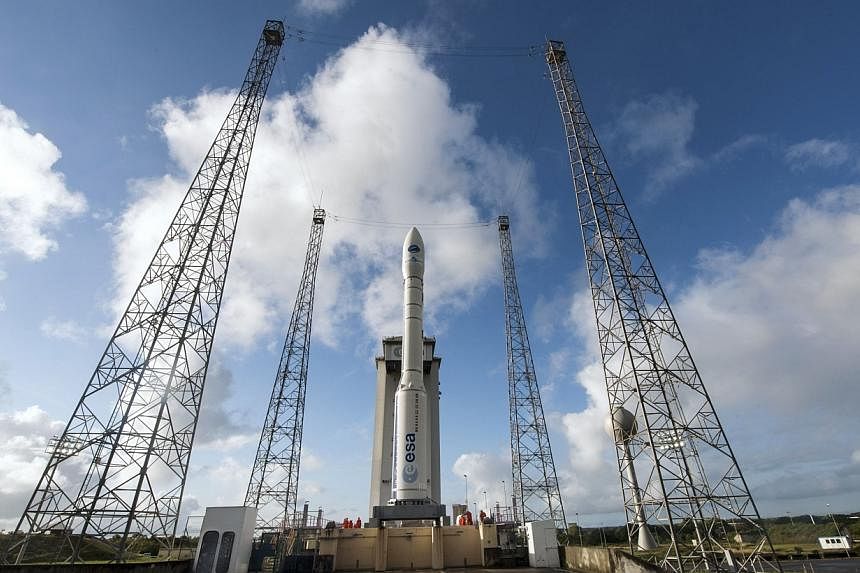PARIS (Reuters, AFP) - The European Space Agency (ESA) launched an experimental spaceplane on Wednesday which it hopes will pave the way towards the continent's first reusable space transportation systems.
Reusable spaceplanes that can carry out controlled landings on runways rather then splashing down in the ocean could help bring down costs. They could also enable scientists to bring back samples from celestial bodies such as comets.
A Vega rocket lifted off from ESA's base in French Guiana at 1340 GMT (9:40pm Singapore time) bearing the Intermediate eXperimental Vehicle (IXV) on a 100-minute test mission, ESA said in a webcast.
The IXV, which is the size of a car, is to separate from the rocket at an altitude of 320km and will coast up to an altitude of 450km before beginning re-entry.
The spaceplane will decelerate to supersonic from hypersonic speeds and then deploy a parachute to slow further. Flaps and thrusters will autonomously steer it to splash down in the Pacific Ocean, around 100 minutes after the launch, where flotation balloons will keep it from sinking so it can be recovered by ship.
IXV, which ESA says cost around 150 million euros (S$153.84 million) in design, development and related ground support, is similar to Nasa's space shuttle orbiters, which were retired in 2011 after 30 years of missions, and to the Dream Chaser spaceship being developed by Sierra Nevada Corp.
Unlike those vehicles, however, the ESA experimental spaceship is wingless.

